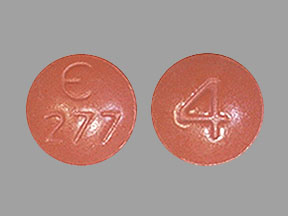Generic Fycompa Availability
Last updated on Sep 10, 2025.
Fycompa is a brand name of perampanel, approved by the FDA in the following formulation(s):
FYCOMPA (perampanel - suspension;oral)
FYCOMPA (perampanel - tablet;oral)
-
Manufacturer: CATALYST PHARMS
Approval date: October 22, 2012
Strength(s): 2MG [RLD] [AB], 4MG [RLD] [AB], 6MG [RLD] [AB], 8MG [RLD] [AB], 10MG [RLD] [AB], 12MG [RLD] [AB]
Is there a generic version of Fycompa available?
A generic version of Fycompa has been approved by the FDA. However, this does not mean that the product will necessarily be commercially available - possibly because of drug patents and/or drug exclusivity. The following products are equivalent to Fycompa and have been approved by the FDA:
perampanel suspension;oral
-
Manufacturer: MSN
Approval date: July 11, 2025
Strength(s): 0.5MG/ML [AB]
perampanel tablet;oral
-
Manufacturer: TEVA PHARMS USA INC
Approval date: May 23, 2025
Strength(s): 2MG [AB], 4MG [AB], 6MG [AB], 8MG [AB], 10MG [AB], 12MG [AB]
Note: Fraudulent online pharmacies may attempt to sell an illegal generic version of Fycompa. These medications may be counterfeit and potentially unsafe. If you purchase medications online, be sure you are buying from a reputable and valid online pharmacy. Ask your health care provider for advice if you are unsure about the online purchase of any medication.
See also: Generic Drug FAQ.
Related patents
Patents are granted by the U.S. Patent and Trademark Office at any time during a drug's development and may include a wide range of claims.
-
1,2-dihydropyridine compounds, process for preparation of the same and use thereof
Patent 6,949,571
Issued: September 27, 2005
Inventor(s): Nagato; Satoshi et al.
Assignee(s): Eisai Co., Ltd. (Tokyo, JP)The present invention provides a novel compound having an excellent AMPA receptor inhibitory action and/or kainate inhibitory action. A compound represented by the following formula, a salt thereof or hydrates thereof. ##STR1##
In the formula, Q indicates NH, O or S; and R.sup.1, R.sup.2, R.sup.3, R.sup.4 and R.sup.5 are the same as or different from each other and each indicates hydrogen atom, a halogen atom, a C.sub.1-6 alkyl group or a group represented by the formula --X-A (wherein X indicates a single bond, an optionally substituted C.sub.1-6 alkylene group etc.; and A indicates an optionally substituted C.sub.6-14 aromatic hydrocarbocyclic group or 5- to 14-membered aromatic heterocyclic group etc.).Patent expiration dates:
- May 23, 2025✓✓✓
- May 23, 2025✓✓✓
- May 23, 2025✓✓✓
- May 23, 2025✓✓✓
- May 23, 2025✓✓✓
- May 23, 2025
-
Method for producing 1, 2-dihydropyridine-2-one compound
Patent 8,772,497
Issued: July 8, 2014
Inventor(s): Arimoto Itaru & Nagato Satoshi & Sugaya Yukiko & Urawa Yoshio & Ito Koichi & Naka Hiroyuki & Omae Takao & Kayano Akio & Nishiura Katsutoshi
Assignee(s): Eisai R&D Management Co., Ltd.The present inventions provide a method for commercially producing a 1,2-dihydropyridine-2-one compound represented by the following formula (III-a)
Patent expiration dates:
- July 1, 2026✓
- July 1, 2026
More about Fycompa (perampanel)
- Check interactions
- Compare alternatives
- Pricing & coupons
- Reviews (67)
- Drug images
- Side effects
- Dosage information
- During pregnancy
- FDA approval history
- Drug class: AMPA receptor antagonists
- Breastfeeding
- En español
Patient resources
Professional resources
Related treatment guides
Related/similar drugs
Glossary
| Term | Definition |
|---|---|
| Drug Patent | A drug patent is assigned by the U.S. Patent and Trademark Office and assigns exclusive legal right to the patent holder to protect the proprietary chemical formulation. The patent assigns exclusive legal right to the inventor or patent holder, and may include entities such as the drug brand name, trademark, product dosage form, ingredient formulation, or manufacturing process A patent usually expires 20 years from the date of filing, but can be variable based on many factors, including development of new formulations of the original chemical, and patent infringement litigation. |
| Drug Exclusivity | Exclusivity is the sole marketing rights granted by the FDA to a manufacturer upon the approval of a drug and may run simultaneously with a patent. Exclusivity periods can run from 180 days to seven years depending upon the circumstance of the exclusivity grant. |
| RLD | A Reference Listed Drug (RLD) is an approved drug product to which new generic versions are compared to show that they are bioequivalent. A drug company seeking approval to market a generic equivalent must refer to the Reference Listed Drug in its Abbreviated New Drug Application (ANDA). By designating a single reference listed drug as the standard to which all generic versions must be shown to be bioequivalent, FDA hopes to avoid possible significant variations among generic drugs and their brand name counterpart. |
| AB | Products meeting necessary bioequivalence requirements. Multisource drug products listed under the same heading (e.g. identical active ingredients, dosage form, and routes of administration) and having the same strength (see Therapeutic Equivalence-Related Terms, Pharmaceutical Equivalents) generally will be coded AB if a study is submitted demonstrating bioequivalence. In certain instances, a number is added to the end of the AB code to make a three character code (e.g. AB1, AB2, AB7). Three-character codes are assigned only in situations when more than one reference listed drug of the same strength has been designated under the same heading. Two or more reference listed drugs are generally selected only when there are at least two potential reference drug products which are not bioequivalent to each other. If a study is submitted that demonstrates bioequivalence to a specific listed drug product, the generic product will be given the same three-character code as the reference listed drug it was compared against. |
Further information
Always consult your healthcare provider to ensure the information displayed on this page applies to your personal circumstances.

